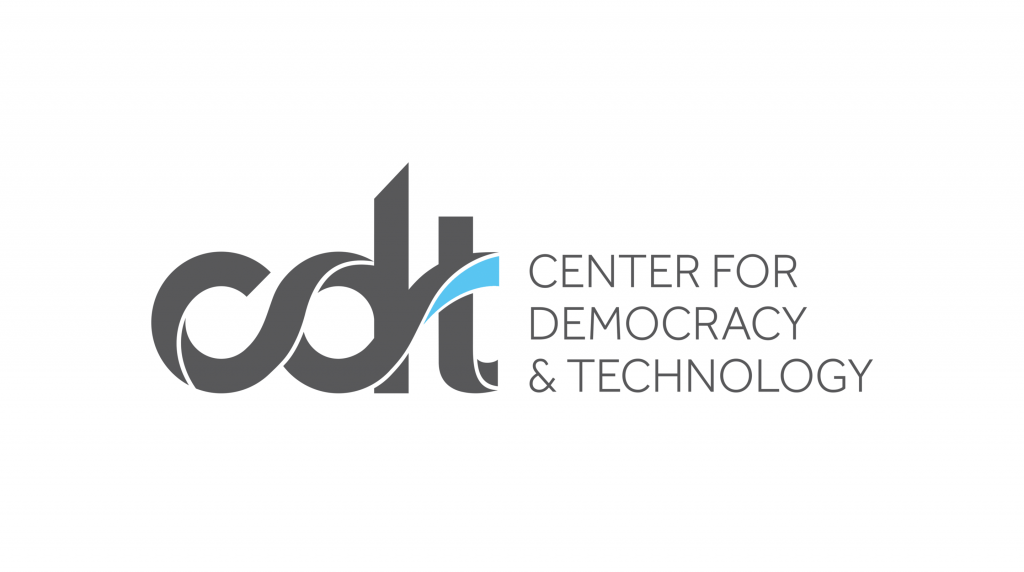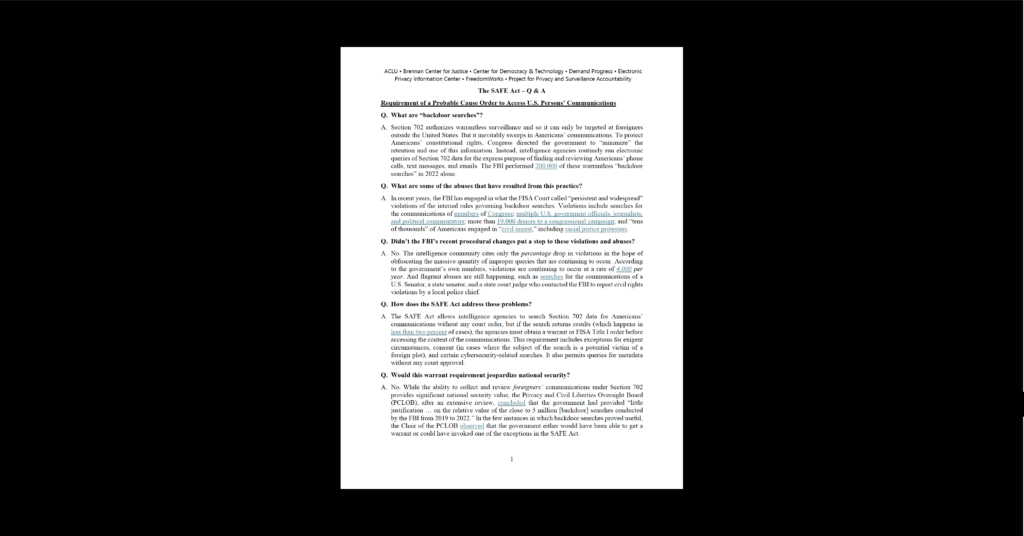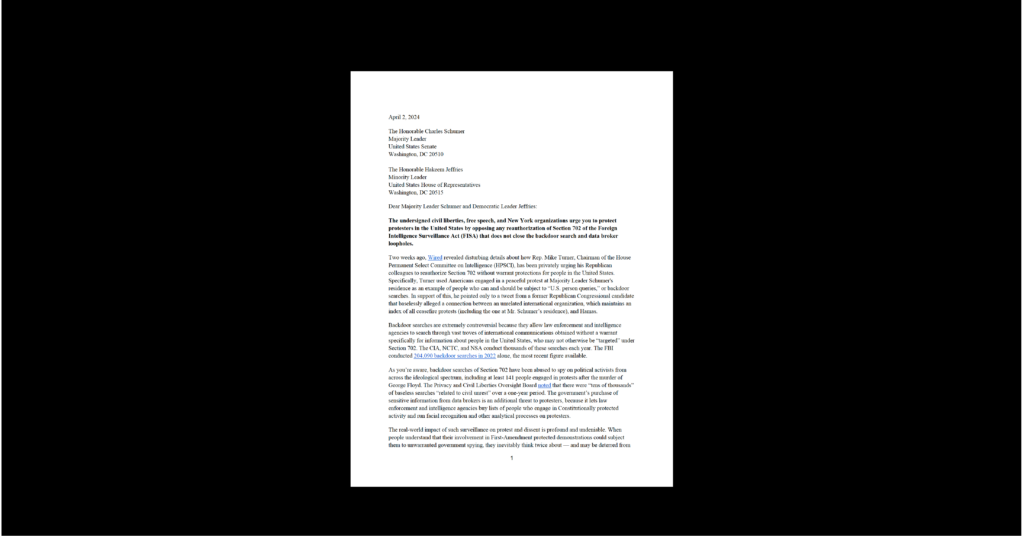Thwarting Civil Liberties – The Problem with Domestic Intelligence
Developing a set of rules that will reliably distinguish between activities that are legitimate and those that are true threats continues to vex domestic intelligence policy. In the past week, this fundamental issue cropped up in media discussion of a leaked DHS intelligence report and also during a Senate hearing on information sharing. In thinking about the problem, and recognizing that the following certainly is nowhere near a complete solution, I suggest three potential improvements:
1) intelligence reports and threat assessments that deal with ideological motivation should expressly address the need to distinguish between ideas and illegality;
2) Congressional oversight committees should review samples of domestic intelligence reports from different stages of the information collection, analysis and sharing process, and;
3) frontline law enforcement civil liberties training material should be made openly available.
Last week, Department of Homeland Security (DHS) Secretary Napolitano issued a response to the public outcry over the intelligence report that leaked earlier this month. DHS' "Rightwing Extremism" threat assessment had identified opposition to controversial government policies such as immigration and the election of President Barack Obama as factors that may stimulate terrorism.
(To read more about the DHS intelligence report and other reports like it, please see my earlier post.)
Napolitano initially stood by the report, stating that it was a "lookout for criminal and terrorist activity but we do not – nor will we ever – monitor ideology or political beliefs." Later, Napolitano expressed regret for the wording of a footnote that referred to veterans, stating that it was meant to be "an assessment – it was not an accusation" against all veterans. Although she described the threat assessment as routine, it was also revealed that the report was issued in spite of concerns raised by the civil rights division of DHS. However, DHS refused to identify what their specific concerns were and how they would alter the content of the report.
Napolitano's statements seem incomplete. If our law enforcement agencies are not monitoring political beliefs, it's worth explaining why political beliefs regularly appear in the intelligence reports that have leaked from fusion centers and DHS. Napolitano makes the point that DHS wants to monitor threats and not ideas standing alone, but she didn't explain how they distinguish between ideas and ideas that are relevant to threats. Her statement paid tribute to civil liberties protection and oversight without specifying what procedures are actually implementing these concepts throughout the information sharing system.
The same day Napolitano released her statement, Rep. Bennie Thompson (D-MS), Chairman of the House Homeland Security Committee, which oversees DHS, sent a letter to Napolitano raising concerns over the civil liberties implications of the "Rightwing" report. In his letter, Chairman Thompson argued that the "report appears to have blurred the line between violent belief, which is constitutionally protected, and violent action, which is not." Chairman Thompson also requested more information on oversight for intelligence products and the role that DHS' civil liberties officers play in the clearance process.
A week later, the issue of rules to prevent overbroad information collection was a focus of the Senate Terrorism and Homeland Security Subcommittee hearing, entitled "Protecting National Security and Civil Liberties: Strategies for Terrorism Information Sharing." Everyone agreed that civil liberties depend on whether law enforcement and intelligence analysts can reliably distinguish between legitimate activity or beliefs and true threats. However, none of the policymakers and experts at the hearing had concrete details on how that should work in practice.
In her testimony, Zoe Baird, President of the Markle Foundation, recommended a government-wide privacy policy, echoing a recent Markle report on information sharing. The policy must, she said, eliminate doubts and contradictions regarding what activities, when taken together, might signify a terrorist plot. Another witness, Chief J. Thomas Manger of Maryland's Montgomery County Police Department, noted potential problems with information collection. "No police chief wants his officers involved in confrontational interactions with people engaged in innocent, constitutionally protected behavior. Not every person wearing baggy pants is a gang-banger and not every person videotaping the Washington Monument is a terrorist."
Chief Manger identified consistent training among law enforcement officers as a key protection. Manger stated that such training would help law enforcement distinguish between activity that is legal and that which is related to criminality and terrorism. A key element to an effective information sharing system, he said, is an analyst who knows exactly what to put into the system and what to keep out.
I do not presume to have complete answers to these issues. However, I have three proposals to float:
First, intelligence reports like DHS' "Rightwing Extremism" assessment should expressly discuss the civil liberties issues and provide explicit instruction on how to avoid using ideology as an indicator of terrorist tendencies. The controversy over DHS' report (as well as reports out of fusion centers in Virginia, Missouri, and Texas) is rooted in the perceived conflation of innocent activity with terrorist activity. The reports should address that very problem. All parties would gain from including a well-written, detailed warning on civil liberties protection as they relate to the particular threats addressed in the report.
Second, expanding on Chairman Thompson's requests, there should be congressional oversight of reports from different areas of the information-sharing stream. For example, the oversight committees should examine sample Suspicious Activity Reports (SARs) flowing from local police departments, sample ISE-SARs flowing from fusion centers to the larger ISE system, and sample intelligence reports flowing from fusion centers, DHS and other agencies. The committees should be able to make a random selection and review the reports' sources. The overseers might then get a better sense of whether and how civil liberty protections are working on the ground, as well as a sense of the overall value of these reports. Perhaps the reports that have leaked are uniquely controversial, and most other reports are not problematic. As a matter of oversight, it would be helpful for Congress to find out.
Third, perhaps the law enforcement training materials that address this specific problem should be made public. During the Terrorism and Homeland Security Subcommittee hearing, Chief Manger and Senator Kyl acknowledged that training is a key safeguard, but no one is saying what comprises that training. Little material is openly available on how the civil liberties protections recommended in agency guidelines are actually being interpreted by domestic intelligence-gatherers. Loosely defined terms like "suspicious" and "nexus to terrorism" have limited usefulness without insight into how those standards are applied.
Ultimately, the government, the public and the civil liberties community say they want the same thing: databases containing accurate information on real threats, not innocent activity. These recommendations alone are certainly not adequate civil liberties protection, but they are steps in the right direction.


